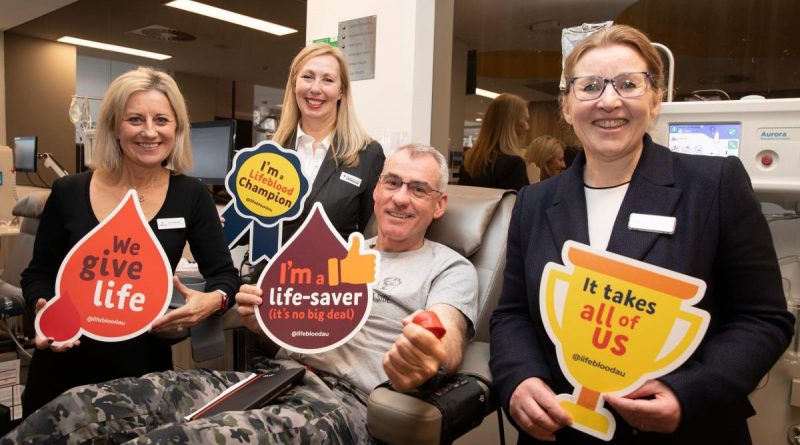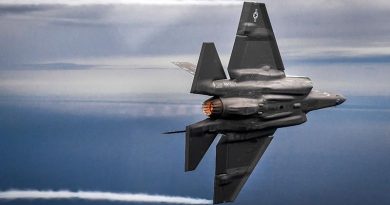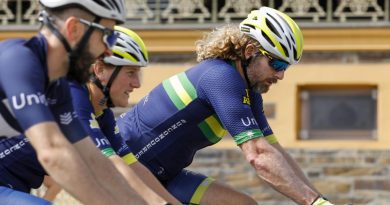Defence Blood Challenge open to new donors

Defence personnel will be presenting their arms to give more than 11000 blood or plasma donations as part of the 2022 Defence Blood Challenge.
CAPTION: Meg, Sally and Cath from the Red Cross Lifeblood Centre with the Deputy Chief of Navy Rear Admiral Chris Smith as he donates plasma at the launch of the 2022 Defence Blood Challenge. Story by Sub-Lieutenant Tahlia Merigan. Photo by Petty Officer Bradley Darvill.
In its 14th year, Australia’s longest-running blood challenge started on September 1 and winds up on December 8.
This year’s challenge will be open to more donors in the Defence community after the Therapeutic Goods Administration lifted the ‘mad cow disease’ ban, allowing people who lived in the United Kingdom from 1980 to 1996 to donate blood in Australia.
Deputy Chief of Navy Rear Admiral Chris Smith, Deputy Chief of Air Force Air Vice-Marshal Stephen Meredith, Army’s Brigadier David Kelly and Air Force’s Group Captain Mike Burgess-Orton launched the challenge on September 1 at the Lifeblood Civic Centre in Canberra.
Rear Admiral Smith said a single blood donation could save the lives of up to three Australians and plasma could be used to treat patients with serious burns, cancer or brain disease.
“The Defence Blood Challenge exemplifies the Defence value of service to the community,” Rear Admiral Smith said.
“I am confident our people will pull out all stops to reach a new high and demonstrate their commitment to serving our country.”
He said Defence personnel would aim to improve on last year’s total of 10689 donations, which saved up to 32067 lives.
Group Captain Burgess-Orton, who spoke at the launch about his wife’s need for blood transfusions due to a degenerative disease, said: “You never know when that personal connection is suddenly going to grab you and shake you up. It’s the reason I started donating.”
Brigadier Kelly said Army personnel had a strong history of donating blood and plasma.
“The Defence Blood Challenge it is a fantastic opportunity for our people to roll up their sleeves, contribute to the community, and ultimately save lives,” he said.
.
.

.
.





